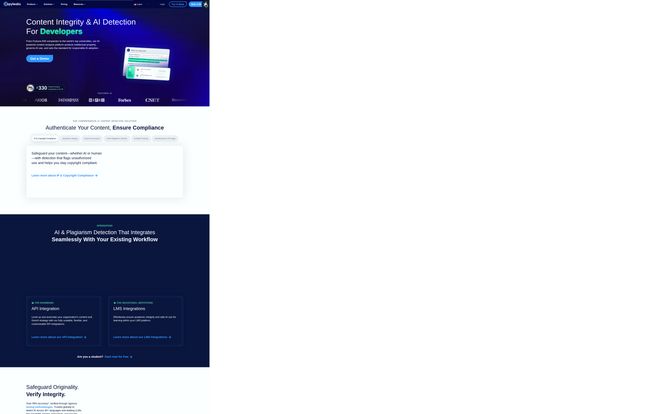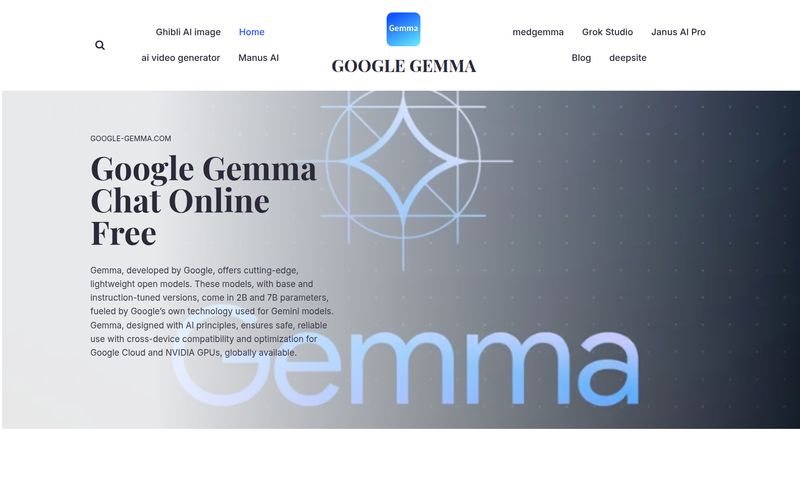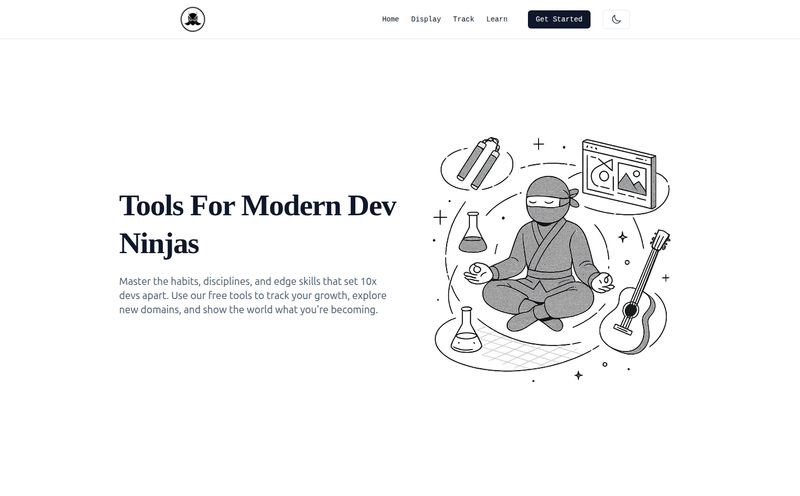I’ve been in the SEO and content game for a long time. Long enough to remember when “keyword stuffing” was a legitimate strategy and getting a link from a directory was a big win. Things have changed. A lot. Today, the biggest challenge isn’t just getting seen by Google; it’s navigating the absolute tidal wave of AI-generated content.
Let's be real for a second. It's a content jungle out there. Every day, a new AI tool drops, promising to write everything for you, from your next pillar page to your social media captions. And while some of it is genuinely helpful for brainstorming or overcoming writer's block, a lot of it is… well, robotic fluff. As someone who builds traffic and reputation on authentic, quality content, this new landscape is both fascinating and a little terrifying.
How do you ensure your freelance writers aren't just hitting “generate” on ChatGPT? How do you, as an educator, verify a student's work is their own? How do you protect your own original work from being scraped and spun? You need a new kind of sheriff in town. And that’s what led me to take a good, hard look at Copyleaks.
So, What Exactly is Copyleaks?
On the surface, Copyleaks looks like a plagiarism checker. But that’s like saying a smartphone is just a device for making calls. It’s so much more. Copyleaks is an AI-powered platform designed to be a one-stop-shop for content integrity. It’s built to sniff out not just old-school copy-and-paste plagiarism but also sophisticated AI-generated text and sneaky paraphrasing that other tools might miss. Think of it as a bloodhound for unoriginal content, with a nose specifically trained for the digital age. It's designed to verify authenticity, protect intellectual property, and basically help us all maintain some semblance of originality in a world flooded with AI.
Why Your Old Plagiarism Checker Isn't Cutting It Anymore
I used to rely on a couple of old-standby plagiarism tools. They were fine for catching students who copied a whole paragraph from Wikipedia. But the game has changed. The rise of large language models (LLMs) like GPT-4, Gemini, and Claude means someone can generate a unique-looking article in seconds. It won't flag on a traditional plagiarism scan because the sentences are technically original. But the soul? The expertise? The human touch? It's just not there.
This is the new frontier. We're not just fighting plagiarism anymore; we're fighting for authenticity. Google's own John Mueller has been pretty clear that they're targeting unhelpful, low-quality AI content. So, if you're an agency or a business owner, you can't afford to be publishing content that might get your site penalized. You need a tool that can see the difference between human-authored text and the digital fingerprints of an AI. And that’s where Copyleaks steps in with its dual-threat approach.

Visit Copyleaks
A Look Under the Hood: Copyleaks' Key Features
I spent some time kicking the tires on this platform, and a few features really stood out to me as being particularly relevant for today's creators, marketers, and educators.
The AI Detector: Calling Out the Robots
This is the crown jewel, in my opinion. Copyleaks claims over 99% accuracy in detecting AI-generated content, including text from all the big players. It doesn't just give you a yes/no answer. It highlights specific sentences and gives you a probability score, which is incredibly useful for nuanced reviews. I've thrown some tricky, human-edited AI text at it, and it's impressively sharp. It feels less like a simple checker and more like a forensic analysis, picking up on the subtle patterns and lack of linguistic variance that often betrays an AI author.
The Plagiarism Checker: Still a Classic for a Reason
While the AI detection is the shiny new thing, the plagiarism-checking capabilities are still top-notch. It checks against billions of online sources, academic papers, and private repositories. A cool feature for my developer friends is Codeleaks, which specifically checks for plagiarized source code. It also supports over 30 languages, which is a massive plus for global teams and academic institutions. So, it covers all your bases, from the traditional to the cutting-edge.
Integrations That Actually Make Your Life Easier
One of my pet peeves is a great tool that lives on an island, forcing you to constantly copy and paste text between windows. Copyleaks avoids this with robust API and LMS integrations. For educators, this means it can plug directly into platforms like Canvas, Moodle, and Blackboard. For businesses and agencies, the API allows you to build its functionality right into your own content management system. It's a small thing that makes a huge difference in workflow efficiency.
Let's Talk Brass Tacks: The Copyleaks Pricing Structure
Alright, let's get to the question on everyone's mind: what's this going to cost me? The pricing is subscription-based and uses a credit system, which is important to understand. Here's a quick breakdown:
| Plan | Monthly Price | Key Features |
|---|---|---|
| AI Detector | $7.99 /mo | AI content detection only. |
| Plagiarism Checker | $8.99 /mo | Plagiarism & paraphrasing detection. |
| AI + Plagiarism Detection | $13.99 /mo | The full suite, everything included. |
| Enterprise & LMS | Contact for quote | Custom, high-volume, white-label options. |
The key thing to note is that the standard plans come with 1,200 credits per year, billed annually (which works out to the monthly price shown). And here's the translation: 1 credit equals 250 words. So, the $13.99/mo plan gets you enough credits to scan about 300,000 words over the course of a year. For a solo blogger, that's probably plenty. For a content agency pumping out dozens of articles a month, you'll likely be looking at the Enterprise plan.
Is it worth it? For a serious content creator, agency, or academic institution, I’d say yes. The cost of one plagiarized article or a Google penalty for spammy AI content is far, far higher than this subscription fee. It’s an insurance policy for your content's integrity.
The Good, The Not-So-Good, and The Reality
No tool is perfect, and a good review tells the whole story. So here's my honest take.
What I love is the comprehensive nature of the tool. Having high-quality AI detection and plagiarism checking in one place, with a clean interface, is a big win. The fact that it's trusted by heavy-hitters like Semrush and Medium also lends it a ton of credibility in my book.
On the flip side, the pricing, while fair for the value, might be a bit of a hurdle for individual users or those just starting out. The biggest caveat, however, is one that applies to any AI detection tool: false positives are possible. No detector is 100% infallible. You can't just blindly trust the score; you still need a human to look at the highlighted text and use their judgment. It's a powerful assistant, not a replacement for a human editor. Think of it as a metal detector on a beach—it'll tell you where to dig, but you still have to do the digging to see if its treasure or just an old bottle cap.
My Final Verdict: Is Copyleaks the Real Deal?
So, after all this, do I think Copyleaks is worth your time and money? In the current content environment, my answer is a resounding yes.
It’s not just a tool; it's an adaptation to the new reality of content creation. The internet is getting noisier by the day, and the ability to verify, authenticate, and protect the integrity of your content has never been more valuable. Copyleaks provides a robust, accurate, and user-friendly way to do just that.
It's an essential piece of kit for SEO agencies, serious publishers, marketing teams, and any academic institution that cares about originality. While you should never follow its reports blindly, it gives you the data you need to make informed decisions and maintain the highest standards of quality and authenticity for your work. In this new, wild west of content, Copyleaks feels like a reliable sidearm to have.
Frequently Asked Questions
- How does the credit system in Copyleaks work?
- It's pretty straightforward. One credit allows you to scan up to 250 words. The standard plans come with an annual allotment of credits, so you can use them as needed throughout the year.
- Can I scan for both AI content and plagiarism simultaneously?
- Yes, you can! If you're on the 'AI + Plagiarism Detection' plan, you can run a single scan that checks for both. It's very efficient and gives you a comprehensive report in one go.
- Is Copyleaks accurate at detecting content from GPT-4, Gemini, and Claude?
- Based on my tests and their documentation, yes. Copyleaks is specifically designed and continuously updated to detect content from all major AI models with a high degree of accuracy. It's one of its main selling points.
- What's the cancellation policy for Copyleaks?
- According to their site, you can cancel your subscription at any time to prevent it from renewing for the next billing cycle. You'll retain access to your plan until the current billing period ends.
- Is there a free version of Copyleaks?
- While they don't have a permanently free plan, Copyleaks typically offers a free scan or a limited trial directly on their website so you can test its functionality before committing to a subscription. It's a great way to see it in action.
Reference and Sources
- Copyleaks Official Pricing Page
- Google's Stance on AI-Generated Content (via Search Engine Journal)
- International Center for Academic Integrity



